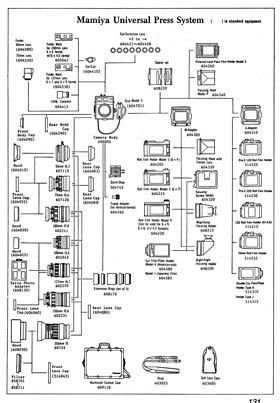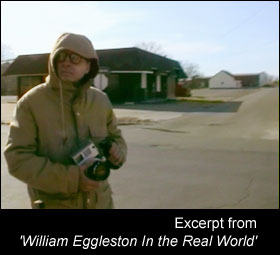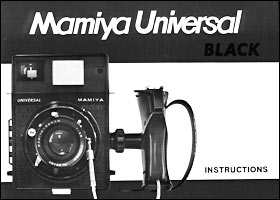
|
Search for Press Cameras
I enjoy shooting with a cheap plastic toy camera, but I also wish to explore other medium format camera with better precision within reasonable budget. In this searching process, I came across a comparison on the web covering various press cameras, namely, Graflex XL, Koni / Rapid Omega and Mamiya Press. Then I knew roughly what I needed.
In fact, before acquiring Mamiya Super 23, I also thought about Kiev 60 and Kiev 88. I even purchased a Kiev 88 via ebay, but finally I returned and got refunded. The shutter curtain jammed and broke even in my first few trials, before actually going into the field for shooting. You can search for Kiev 88's shutter jam problem in web for more details.
With a bit little experience with Kiev 88, its design objective is good in making all components modular and integrated with the intelligence in mind. Actually, it is a Hasselblad copy (Finally I got a Hasselblad 500C/M). e.g. you cannot dismount the back before inserting the dark slide, you cannot fire shutter until completing the film advance, you cannot fire shutter until dark slide removed. However, it may be the point that is creating more problem when the actual manufacture standard did not fully cater for that.
Koni Omega seems to be more robust, but supports up to 6x7 frame size, which is still not I preferred.
Mamiya Press System
Common models for this Mamiya Press series you can find are Mamiya Standard, Mamiya Super 23 and Mamiya Universal. Standard and Super 23 can fit Mamiya backs, while Universal is built to fit different back types by using adapter :
- Universal + M Adapter + Mamiya Back
- Universal + G Adapter + Graflex Back
- Universal + Polaroid Back
The design is modular but integrated with little intellience among components. It is simple, and just works, e.g. Lens built with shutter, body for RF focus mechanism, back for film advance / rewind. Each component just performs its own well-defined function without too much coupling with others. You can expose film for as many time as you want without restriction from film advance mechanism. Dark slide and back can be attached and detached any time in any sequence.

From its name, it is so easy to associate with shooting by press photographers. It need to be easy to operate, robust like a workhorse. Probably, it is due to the loosely coupled and modular design to achieve this. From its appearance, it is huge in size, like a Gozilla. Was it a lovely pet kept by press photographers, to bring around ? I think, yes.
It is a complete system with a full range of accessories supported to suit different shooting requirement, e.g. sport finder for capturing fast moving subject, ground glass focusing for sheet film, extension tube for marco photography, tilting back for perspective control in architectural photography. It started from a press camera, but extended beyond that.
How to Choose ?
Mamiya Universal and Super 23 are very similar but different cameras. Function-wise, they cannot replace each other. Many people always ask, what should I choose ?
- If you want to shot polaroid (instant photo) => Mamiya Universal
- If you want to shot by using built-in bellow with tilt function => Mamiya Super 23

About The Camera
The camera shown in this webpage is my Mamiya Super 23 purchased via ebay (image credit - from wideangleman @ ebay). You can see a test sample shot here.
- with Bayonet mount, lens available with various focal length
- quite often come with the standard lens, Mamiya Sekor 100mm / F3.5, supporting 1/500 - 1 sec shutter speed & Bulb setting, and Flash sync contact of M / X (mine is a DIY modified one to lock the flash sync in X position to facilitate usage of common modern flash, and sych chord adapter is attached, with sync chord passing through the hand grip)
- Hand grip attaching to the left side of the camera body, to provide attachment of shutter release cable & pushing button, and cold shoe for external flash attachment
- Various roll film backs are available to support 120/220 format for frame size 6x9, 6x7, 6x6, 6x4.5. Some film backs support only 1 frame size (e.g. 6x7, 6x9) but some support multiple frame sizes (e.g. 6x9+6x6+6x4.5, 6x6+6x4.5). Some models are using simple film advance rotating knot with red window displaying count on film backing paper, while some others are using double stroke on the film advance crank for advancing one frame with mechanical film counter built on film back. No couping of shutter release with film advance control allowing multi-exposure.
- accessory shoe on the top of camera body, for attaching finder, exposure meter, etc

More Information
- Other Resources - Students of journalism will experiment with various types of cameras. The digital age has changed the way photography and journalism blend together. Projects and business use the medium in a variety of ways. Those studying for an AACSB online MBA or with an interest in strategic public relations will find the photographic medium an exciting way to further their studies. Photographs have a way of impacting a potential consumer or scholar that words alone do not. Finding the right tools and cameras is an important step in the learning process. Expirimentation can be fun and produce many different results that can be applied to various practical applications.
|

